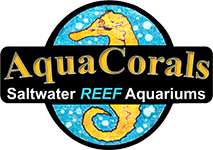The newest addition to the AquaCorals Star Polyp soft coral line-up!
This is a unique color form of the iconic Star Polyp with rich deep purple throughout with blue tones in the polyps (depending on lighting). A simply beautiful soft coral that will augment any other corals you have.
The pic is a Parent. Babies are mounted to real live rock.
EST. 2021
Soft Coral Color Guide: Example - Base color "Green"
"Green" = shows it's green color mostly under actinic blue lighting
Neon "Green" = shows it's green under full daylight but is more intense green under actinic blue lighting
Ultra "Green" = shows it's green under full daylight but literally "Glows" green under actinic blue lighting! These stand out over all!
Metallic = the color has a metallic sheen to it.
What a soft coral displays for color is greatly dependent on where it's positioned in relation to your light & the intensity & color of light above it. Most soft corals lighten in color as they expand (much like a balloon does when blown up) and often intensifies in color &/or looks darker when closed due to tissue concentration.
Like wild soft corals, aquacultured tank raised soft corals offer many benefits to reef fish like hiding places or perches and even sleep spots! Tank raised soft corals are much easier to keep than hard corals and they add beautiful form, color and movement to a tank.
My Parent Tanks as well as baby soft coral pics are taken under "full daylight" which is an equal mix of 10K & actinics. I work hard to represent my soft corals as they are without color doctoring photos. Use my images as a guide & expect some variances given your tank conditions vs mine.
To get the same results, give your corals approx. 6 hours a day of "full daylight". Resist the urge to keep them in blue actinic color POP phase. Sunrise then high noon full daylight then sunset over 10-12 hours is best.
